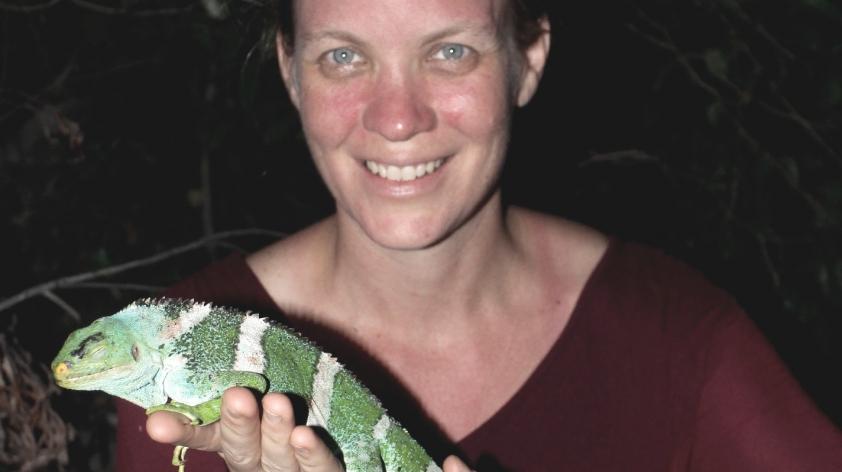
Fiji Iguana Conservation from Both Sides Now
Part Two: In the Lab
My trip to Fiji has come to an end, and back in San Diego, I open the freezer and scan a row of boxes, each containing 100 small tubes of Fiji iguana blood or tissue. I refer to my spreadsheet to locate the next group of samples to analyze. This is the most extensive collection of Fiji iguana samples outside of Fiji, and after my foray into fieldwork, I know how much work went into collecting each one of them.
Fieldwork is only the first part of the puzzle of classifying and protecting Fiji iguanas, however. The samples collected in the field are stored in Fiji until they can be sent to San Diego, where they are archived at the US Geological Survey and our Institute. Then the lab work begins. I first extract and sequence each animal’s DNA to confirm its species identification, comparing these sequences to those previously analyzed. Next I use a set of 17 genetic markers I developed using a microsatellite library obtained through funding from the International Iguana Foundation. These markers yield each individual’s unique genotype, which can be used to identify individuals, determine parentage and relatedness, and examine genetic diversity. My sequencing results confirm that there is a wealth of genetic diversity in Fiji iguanas, suggesting at least one new species in need of description. The microsatellite data highlight certain populations that are highly unique and have most likely been isolated from the rest of their conspecifics. These genetic studies will help determine how iguanas should be protected in Fiji and which captive lineages could potentially be used for reintroduction.
Thinking back to my field trip in Fiji, I recall reaching the end of the transect at the top of the tiny island. I remember standing on tiptoe on a boulder, peering into the distance for a look at the neighboring island, where a huge fire blazed, clearing land for farming. Very little Fiji iguana habitat remains on the Fijian mainland, and small islands like this one with their unique populations of iguanas need our protection more than ever. Fortunately, Fijian government officials and local land-owning clans are aware of the iguana’s plight and are open to creating more island sanctuaries for the Fiji iguana. Groups like the National Trust of Fiji and the Fiji iguana SSP support fundraising to protect these wild iguanas and those in assurance colonies like the one at the San Diego Zoo. With hard work and funding, the unique iguana population on this small gem of an island could be protected for the future, along with the rest of Fiji’s rare iguana species.













